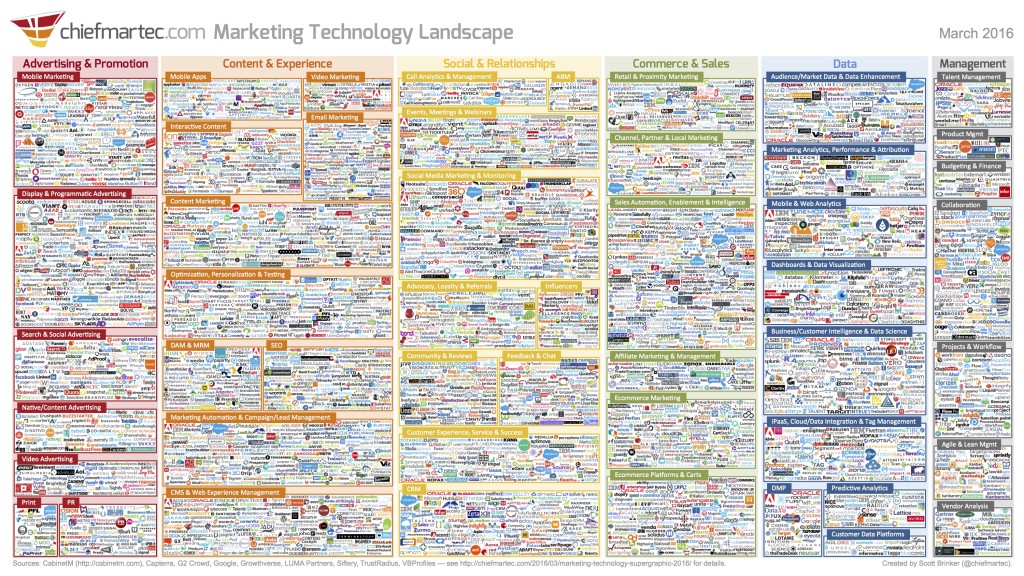 The ways in which companies market their products or services continues to shift to digital. There has been an explosion of digital marketing technologies.
The ways in which companies market their products or services continues to shift to digital. There has been an explosion of digital marketing technologies.
Within the context of CRM, marketing and sales efforts have been rapidly gaining a singleness of purpose along with the new ways of marketing. While sales and marketing departments once had limited interactivity, these two worlds have become much more technologically unified and synergistic.
Yet, despite these significant shifts, many companies still own an old contact manager or legacy CRM system that was designed for a time when marketing was executed very differently than it is today and when sales and marketing users were walled off from one another.
Marketers at companies with legacy CRM systems are often frustrated about how manual their processes are and they can be downright exasperated when seemingly simple requests have unattainable solutions. What are some of the factors that cause marketers within these organizations to often suffer in silence because there’s nothing that can be done to alleviate their pain within the current environment?
1. Leads, Prospects, and Customers Are All Mixed Together
In some older contact managers and CRM systems, there’s no way to import unqualified leads into a bucket that’s separate from prospects and customers. The result is a sales database with a lot of distracting clutter — the marketing department gets the blame for “dumping a lot of useless contacts” into the CRM system over the years.
2. There’s No Way to Generate Web Form HTML
After website form submissions are distributed as emails in legacy CRM environments, this Lead information needs to be manually entered into the CRM system. Sometimes, it never gets entered. Newer CRM systems make generating Webform HTML, for direct Lead submission into CRM, a simple task.
3. Lead Assignment Rules Needs to be Coded
In many legacy CRM systems, there’s no administrator-friendly way to set up Lead assignment rules. Instead, a developer needs to code the rules that determine how Leads should be assigned to specific salespeople based on criteria such as location, company size, vertical market or some other criteria.
4. Basic or Non Existent Campaign Management
Marketing campaign management is a mature feature in most of the currently available CRM systems. Older contact managers and CRM systems either have no campaign management — or have very limited campaign management which lacks some of the important functionality that marketers are looking for.
5. Limited or No Integration with Email Service Providers
Marketers need the ability to segment Leads, Prospects, and Customers in the company’s CRM database and then send targeted email marketing messages based on the past behavior of recipients. With legacy CRM systems, this requires a two-step process of building lists and then exporting these lists for import into an email marketing system. Important information, such as clickthroughs and unsubscribes, are not logged back into the CRM system.
6. Limited or No Integration with Marketing Automation Systems
Marketing automation systems, which, among other functions, allow marketing users to develop landing pages, trigger nurture campaigns and collect information about website visitor behavior, are becoming very popular. It can be difficult, or even prohibitively expensive to integrate these systems with an outdated contact manager or CRM system.
7. No Integration with Third Party Databases
Many legacy contact managers and CRM systems do not allow for enriching Lead records from third party databases. New systems let sales users fill gaps in Leads, such as missing email addresses or direct phone numbers.
8. Marketing ROI Metrics Cannot Be Easily Extracted
Even if an older CRM system does have a campaign management feature, campaigns may not flow through from Lead to won Opportunity. An Opportunity stores not only the date that a deal was won, but also the actual or estimated measure of revenue. These data points, along with source campaigns and costs, can be used to quantify the effectiveness of various campaigns. Even if an older CRM system can collect most of this information, its reporting tool may not make it easy for a marketer to extract the right types of report.
In Summary
While marketers are not normally viewed as the primary users of a CRM system, they may be the user group that’s experiencing the most pain from an outdated CRM system. As sales and marketing efforts become increasingly intertwined, it becomes commensurately more important to provide these teams with a technology that supports a closer coupling of activities.


